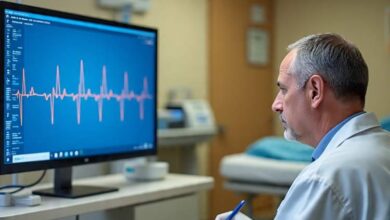How to Calculate Drug Dosage for Nurses in the US (2025) – Step-by-Step Guide to Avoid Dangerous Mistakes
how to calculate drug dosage safely for nurses in the US 2025

When lives are on the line, there’s no room for error, especially when it comes to medication. If you’re searching for how to calculate drug dosage safely for nurses in the US 2025, you’re likely a nursing student, a recent grad, or a practicing nurse determined to avoid costly mistakes. You’re in the right place.

This guide breaks down drug dosage calculations into clear, manageable steps tailored for U.S. nursing practice in 2025. From understanding essential formulas to learning real-world tips that prevent common errors, we’ll walk you through everything you need to know to feel confident, safe, and accurate on the job. Whether you’re prepping for exams or handling high-pressure shifts, mastering this skill can protect your patients—and your license.
Drug Calculations Made Simple: A Quick-Review Guide for U.S. Nurses
Whether you’re preparing for the NCLEX or brushing up for clinical practice, having a strong grasp of how to calculate drug dosage safely for nurses in the US 2025 is absolutely essential. This quick-review guide is designed to refresh your understanding of drug dosage formulas, offer tips for test-taking, and reinforce safe medication practices in real-world nursing settings.
NCLEX Tips for Dosage Calculation Questions
On the NCLEX, drug dosage questions often appear in fill-in-the-blank format, typically involving IV drip rates, intake/output, or oral medication calculations. Here are key points to remember:
-
Follow directions exactly as they appear on the screen. Don’t assume—read carefully.
-
The required unit of measurement (e.g., mg, mL/hr) is always provided. Your answer must match it.
-
Use the on-screen calculator for accuracy—don’t try to do everything in your head under pressure.
-
Only type the number—no commas, units, or words. For example: type
2.5, not2.5 mL. -
Round your answer only at the end of your calculation, and only if the question specifies it.
Practicing these question types in advance can dramatically boost your confidence and reduce costly mistakes.
The 10 Rights of Medication Administration
A huge part of calculating drug dosage safely is not just getting the math right—it’s also ensuring you’re following safe medication protocols. That’s where the 10 Rights of Medication Administration come in.

These are foundational nursing responsibilities every U.S. nurse must follow to prevent medication errors:
-
Right Drug
Always double-check the name and form of the medication. Be especially cautious with look-alike/sound-alike drugs, which are a common source of error. Review The Joint Commission’s list regularly. -
Right Patient
Confirm the patient’s identity using two identifiers (name and ID band). Even if you know the patient, always verify—it’s about safety, not familiarity. -
Right Dose
Compare the doctor’s order with the medication label. Be vigilant with pediatric doses, which often differ significantly from adult doses. -
Right Route
Confirm the prescribed route: oral (PO), intravenous (IV), subcutaneous (SQ), intramuscular (IM), etc. Administering by the wrong route can be life-threatening. -
Right Time and Frequency
Check when the last dose was given and ensure correct timing. Some meds have narrow therapeutic windows. -
Right Documentation
Chart everything clearly—time, dosage, route, and any patient reactions or remarks. Accurate documentation protects both patients and nurses. -
Right History and Assessment
Know your patient’s medical history, allergies, and current medications. These factors can impact how a drug works—or cause serious interactions. -
Right Drug Approach & Right to Refuse
Educate the patient on the medication’s purpose and potential effects. Respect their right to refuse, and document accordingly. -
Right Drug-Drug Interaction & Evaluation
Be aware of any potential interactions with other meds or foods. Also, check the expiration date before administration. -
Right Education and Information
Take time to explain the medication, how it works, and possible side effects. Informed patients are safer, more cooperative, and more likely to adhere to treatment.
Understanding Systems of M easurement in Drug Calculations
easurement in Drug Calculations
To calculate drug dosage safely for nurses in the US 2025, it’s critical to understand the various systems of measurement used in clinical settings. While the metric system is the gold standard in healthcare today, you may still encounter older or alternative systems like the apothecaries’ system and the household system—especially in patient education or outdated documentation.
http://Click here to download the Drug Calculation & Fluid Balance Cheat Sheet (PDF)
Let’s break each one down so you’re confident using and converting between them.
1. Metric System (The Standard in Healthcare)
The metric system is the most widely used and accepted system in U.S. nursing practice—and for good reason. It’s logical, decimal-based, and internationally recognized.
-
Primary Units:
-
Gram (g) – weight
-
Liter (L) – volume
-
Meter (m) – length or distance
-
Everything is based on powers of 10, which makes conversions between units (like mg to g, or mL to L) straightforward. Just move the decimal point left or right.
Example:
1 gram (g) = 1,000 milligrams (mg)
1 milligram (mg) = 1,000 micrograms (mcg)
2. Apothecaries’ System (Rarely Used Today)
The apothecaries’ system is one of the oldest drug measurement systems. While mostly outdated and rarely used in hospitals today, you might still see it in older prescriptions or reference materials.
-
Common Units:
-
Grain (gr) – weight
-
Minim – volume
-
Ounce and Pound – weight (different from the household version)
-
-
Key Notes:
-
Uses Roman numerals (e.g., “gr ii” = 2 grains).
-
Fractions are common (e.g., “gr ¼” = 0.25 grain).
-
The unit appears before the quantity.
-
Often confusing—avoid using it when possible to reduce medication errors.
-
Example Conversions:
1 grain (gr) = 60 or 65 mg
15 grains = 1,000 mg or 1 gram
3. Household System (Used in Non-Clinical Contexts)
The household system may come into play when educating patients on home medication use—especially with liquid medications or over-the-counter drugs.
-
Common Volume Units:
-
Teaspoon (tsp)
-
Tablespoon (Tbsp or T)
-
Cup, pint, quart, and fluid ounce
-
-
Common Weight Units:
-
Ounce (oz)
-
Pound (lb)
-
Although it’s not precise enough for clinical dosing, it’s still helpful to know for communication with patients and caregivers.
Example Conversions:
1 teaspoon (tsp) = 5 mL
1 tablespoon (T) = 15 mL
1 cup = 8 oz = 240 mL
2.2 pounds = 1 kilogram (kg)
4. Other Clinical Measurement Units
Milliequivalent (mEq)
Used for medications that interact chemically, such as electrolytes. It expresses the amount of a substance based on its chemical activity, not just weight.
Common in: Sodium, potassium, bicarbonate
Unit (U)
Used for medications measured by their effect, not by weight or volume. Insulin, heparin, and penicillin are measured in units.
Safety Tip: Never write “U” when documenting. It can be mistaken for a “0” and lead to dangerous overdoses. Always spell it out as “unit.”
Converting Units of Weight and Volume (Metric System)
Accurate conversions are crucial for safe drug dosage calculations. Here’s a quick guide to common metric conversions you’ll use in practice:
Weight
| Unit | Equivalent |
|---|---|
| 1 microgram (mcg) | 0.000001 gram (g) |
| 1 milligram (mg) | 0.001 gram or 1,000 mcg |
| 1 gram (g) | 1,000 mg |
| 1 kilogram (kg) | 1,000 grams |
| 1 kilogram (kg) | 2.2 pounds (lbs) |
Volume
| Unit | Equivalent |
|---|---|
| 1 milliliter (mL) | 0.001 liter (L) |
Medication Safety Alert: Decimal Points Matter!
-
No trailing zeros: Write 2 mg, not 2.0 mg. A misplaced zero can be fatal.
-
Always use leading zeros: Write 0.2 mg, not .2 mg—it could be misread as 2 mg.
Summary Table of Common Measurement Conversions

Metric System
| Metric | Equivalent |
|---|---|
| 1 mcg | 0.000001 g |
| 1 mg | 0.001 g |
| 1 g | 1,000 mg |
| 1 kg | 1,000 g or 2.2 lbs |
| 1 mL | 0.001 L |
| Apothecary | Approximate Equivalent |
|---|---|
| 1 gr | 60–65 mg |
| 5 gr | 300–325 mg |
| 15 gr | 1,000 mg (1 g) |
| 1/150 gr | 0.4 mg |
| Unit | Equivalent |
|---|---|
| 1 tsp | 5 mL or ~16 drops |
| 1 Tbsp | 3 tsp or 15 mL |
| 1 oz | 2 Tbsp or 30 mL |
| 1 cup | 8 oz or 240 mL |
| 1 pint | 16 oz or 480 mL |
| 1 quart | 2 pints or 946 mL |
| 1 lb | 16 oz |
| 2.2 lbs | 1 kg |
Converting Units Between Systems
In U.S. healthcare settings, medication prescriptions may be written in one system (like metric), while the medication label appears in another (like household or apothecary). Understanding how to convert between these systems is critical for safe administration.
Many life-threatening dosage errors occur not because of math—but due to incorrect conversions.
Remember: Household and metric measures are equivalent—not equal. That’s why mastering these conversions is a core part of knowing how to calculate drug dosage safely for nurses in the US 2025.
Common conversions include:
-
Pounds (lb) ↔ Kilograms (kg)
-
Milligrams (mg) ↔ Grains (gr)
-
Minims ↔ Drops (gtt)
Methods for Drug Dosage Calculations
There are three widely accepted methods used by U.S. nurses for calculating drug dosages safely and accurately. Each has its place in clinical practice, depending on the medication form and prescription style.
Click here to download the Drug Calculation & Fluid Balance Cheat Sheet (PDF)
1. Standard Formula Method
This is the most commonly used formula in drug dosage calculations.
Formula:
Standard Formula = (Desired Dose (D) × Vehicle (V)) ÷ Dose on Hand (H)
Where:
-
D = Desired dose (ordered by the healthcare provider)
-
H = Dose on hand (as listed on the label)
-
V = Vehicle (form of the drug – tablet, capsule, mL, etc.)
Example:
Order: Acetaminophen 500 mg
On hand: Acetaminophen 250 mg in 5 mL
D = 500 mg
H = 250 mg
V = 5 mL
Calculation: (500 × 5) ÷ 250 = 10 mL
Answer: 10 mL
2. Ratio and Proportion Method
This is the oldest method still used by many experienced nurses. It sets up a proportion based on known and unknown quantities.
Formula:
H : V = D : x
Where:
-
H = Dose on hand
-
V = Vehicle
-
D = Desired dose
-
x = Amount to administer (unknown)
Example:
Order: Erythromycin 750 mg
On hand: Erythromycin 250 mg capsules
H = 250 mg
V = 1 capsule
D = 750 mg
Set up: 250 : 1 = 750 : x
Multiply: 250x = 750
x = 3 capsules
Answer: 3 capsules
3. Fractional Equation Method
This method is like ratio and proportion but uses fractions. It’s easy to cross-multiply and solve.
Formula:
H/V = D/x
Where:
-
H = Dose on hand
-
V = Vehicle
-
D = Desired dose
-
x = Unknown amount to give
Example:
Order: Digoxin 0.25 mg
On hand: Digoxin 0.125 mg tablets
H = 0.125 mg
V = 1 tablet
D = 0.25 mg
Set up: 0.125 / 1 = 0.25 / x
Cross-multiply: 0.125x = 0.25
x = 2 tablets
Answer: 2 tablets
By practicing these methods and understanding how to convert units accurately, you are reinforcing your skill in how to calculate drug dosage safely for nurses in the US 2025—which is essential not only for passing the NCLEX but for protecting lives every day in your nursing practice.
Fluid Intake and Output (I&O) Calculation – Why It Matters
Just like accurate medication dosing, monitoring a patient’s fluid intake and output (I&O) is a critical nursing responsibility—especially for those at risk of fluid and electrolyte imbalance such as patients with heart failure, kidney disease, or those receiving IV therapy.
If you’re mastering how to calculate drug dosage safely for nurses in the US 2025, you also need to be confident in tracking fluids. These numbers guide treatment decisions, prevent dehydration or fluid overload, and can quite literally save a life.
Unit of measurement:
All intake and output values are measured in milliliters (mL).
What Counts as Fluid Intake?
Nurses must record every fluid the patient consumes or receives, including:
-
Oral fluids (water, juice, milk, soup, any drinks taken with meds)
-
Liquid foods at room temperature (ice cream, gelatin, popsicles, custard)
-
Tube feedings, including flush water
-
IV fluids and parenteral nutrition
-
Blood transfusions
-
Intravenous medications
Tip: Don’t forget to include medication diluents and flushes. Every drop counts—literally.
What Counts as Fluid Output?
Anything the body releases in liquid form should be measured and recorded:
-
Urine output (from catheter or collection device)
-
Vomiting (measured emesis)
-
Liquid stools
-
Suction or tube drainage (e.g., from NG or chest tubes)
-
Wound or fistula drainage (if measurable)
Documentation and Clinical Decisions
At the end of every shift, total intake and output should be calculated and documented in the patient’s chart.
Then ask yourself: Is fluid intake proportional to fluid output?
If you spot a significant imbalance—whether the patient is retaining too much or losing too much—notify the primary care provider immediately. Delays in addressing fluid shifts can lead to rapid patient deterioration.
Recommended Resources
http://Click here to download the Drug Calculation & Fluid Balance Cheat Sheet (PDF)It includes:
-
Core drug dosage formulas
-
IV calculations
-
Pediatric dose by weight
-
10 Rights of Medication Administration
-
Fluid intake & output summary
Top Books on Drug Dosage Calculations for U.S. Nurses
1. Calculate with Confidence (8th Edition)
Author: Deborah Gray Morris
-
One of the most widely used textbooks for nursing dosage calculation in U.S. nursing programs.
-
Covers ratio/proportion, dimensional analysis, and formula methods.
-
Includes safety tips, practice questions, and critical thinking strategies.
🟢 Great for NCLEX prep and daily practice.
2. Dimensional Analysis for Meds: Refocusing on Essential Metric Calculations (6th Edition)
Author: Anna M. Curren
-
Focuses heavily on dimensional analysis—used in many U.S. nursing schools and hospitals.
-
Step-by-step examples and real-world case scenarios.
3. Medical Dosage Calculations (12th Edition)
Authors: June Olsen, Anthony Giangrasso
-
Breaks down the math behind drug administration with intuitive visuals.
-
Includes IV drip rate, pediatric dosing, and safety checklists.
4. Nursing Drug Handbook 2025
Publisher: Lippincott or Davis’s Drug Guide
-
Provides up-to-date drug monographs, side effects, dosage ranges, contraindications.
-
Must-have for bedside care and safe medication checks.
Online Tools & Resources
1. DosageHelp.com – Dimensional Analysis Practice
Website: www.dosagehelp.com
-
Offers free, interactive drug dosage problems for IV, oral, and injection routes.
-
Great for practicing specific question formats (e.g., NCLEX-style).
Frequently Asked Questions (FAQs)
The easiest way is to use the standard formula method:
(Desired Dose ÷ Dose on Hand) × Volume = Amount to Administer.
Many nurses also prefer apps or digital calculators for quick, error-free results.
Accurate drug dosage prevents life-threatening medication errors, protects patients, and keeps nurses legally compliant with state and federal healthcare regulations.
Dosages are typically measured in milligrams (mg), milliliters (mL), grams (g), and units. Nurses must also convert between household, metric, and apothecary systems when needed.
Yes, trusted apps like MedCalc, Epocrates, and Nursing Central offer built-in drug calculators with real-time dosage alerts and clinical guidelines.
Always convert the units before administering the drug. Use verified conversion tables or calculators and double-check with another licensed nurse or pharmacist.
Accordion Content
Yes. Incorrect dosing can result in malpractice claims, disciplinary action by the State Board of Nursing, job loss, or patient harm. Accuracy is a legal and ethical responsibility.





One Comment